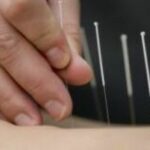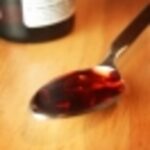This virus is very contagious and can be spread by fecal transmission. Which makes total sense especially in an Elementary School environment. It is spread mostly by droplet transmission. This happens when the virus travels on large respiratory droplets such as a cough or sneeze, even a simple exhale can carry the virus if the person who has the disease is close enough to you. The germ can, and will, land on things after a cough sneeze or exhale, such as toys, clothing, books, a table, or whatever article or person is in close proximity, which is determined to be about 3 feet. The germs lands on the article, someone else touches or plays with the article, then touches their eyes, mouth, or nose, and the virus now has a new victim. The germ that lands on an article can actually stay alive for up to 3 hours.
Apparently, my grandkids followed the classic signs and symptoms of Hand Foot and Mouth Disease.
Several weeks ago, our 4-year-old grandson spent the night with us. I could tell he wasn’t feeling very well. He was a little sluggish and just not his happy-go-lucky self. He appeared to have lost his appetite and no matter what we offered to him, he either refused it, or would only take a couple of bites and then claim that he wasn’t hungry. As we all know, some children do go through phases where they just won’t eat. The phase usually doesn’t last long, then is seems they try to make up for it by eating everything in site.
The next day, we took him home and told his parents he hadn’t eaten much while he was at the house. They were not overly concerned with his not eating either, as he had done this before. Sometimes it is really difficult to tell if a child is sick or not. Unlike us, unless they are really under the weather, they usually go about their business playing and having fun.
During the next week, I called to check on him to see if he had started eating. His mom told me she had gotten a call from the school and had to go pick him up from preschool due to an accident. Apparently while out at recess, he had asked to go to the restroom, but was ignored. Knowing he would get in trouble if he left the playground to go into the school I guess the little guy thought he had no alternative. Then when the accident occurred, he was too embarrassed to tell anybody. But once back in the classroom, the teacher did excuse him to go to the restroom where he tried to clean himself up. Now you can imagine how well a 4 year old would do in completing this task.
Once back in the classroom the teacher realized what had happened, and called his mom to come get him. (The teacher was not the attendant on the playground when he had asked to go to the restroom.) She drew no attention to my grandson, by sending him back to the restroom, or by making him stand somewhere away from the other children. She very discreetly had the aid in the room distract the other children and then asked my grandson if he would help her with something. This teacher was very well prepared for such things as she had extra clothes in various sizes stashed in the bathroom. She cleaned him up and changed his clothes and they waited together for his mom to get him.
This incident occurred on a Thursday, and during the afternoon and evening it was apparent that he had gotten a bug of some sort as his diarrhea got worse. During that first night he also started coughing and didn’t sleep well. The next day, his mom kept him home from school. We all thought it was just something he picked up at school and he would be fine come Monday. He wasn’t.
During the weekend, his little brother also started having symptoms of a bug or flu; we weren’t sure what it was. Being a good nanny and papa we went out to see the boys while they were sick. We had called ahead of time and told them we were coming and asked them if they wanted us to bring them anything special. My oldest grandson said he wanted blue gum. And the baby, well you can’t really understand what he says, but we got him something too.
Upon our arrival, they were both running and jumping and didn’t appear to be ill at all. I thought maybe they had just picked up a 24-hour bug, it had run its course, and they were all better. My oldest grandson of course wanted his gum, which we gave to him. He was chewing away just as happy as could be. Then he stuck his finger in his mouth and had a look of pain on his face. We asked him what was wrong and he said the chewing gum hurt his teeth. We told him to spit it out and of course our first thought was he had another cavity. His mom said she would call first thing Monday to get him into the dentist. This explained why he hadn’t wanted to eat, we considered the fact that his tooth may also be infected, which would cause the diarrhea.
Sunday night, the baby started running a temperature and crying in obvious pain. He too had developed a bad case of diarrhea and had lost his appetite. Monday morning they both were taken to the Dr. After a short examination it was clear that they both had a case of Hand-Foot-and Mouth Disease.
We were told that Hand Foot and Mouth Disease is actually a common occurrence in children aged usually between infant to 6 years old. I did not know this, although I raised 3 children myself, they had never had this so-called common disease. Some adults do get this, but it is rare. It just so happens though that upon hearing the diagnosis, my daughter in law remembered having this disease when she was in fact a teenager. She said it was so painful that she had to put cotton balls in her mouth to keep her cheeks from touching her gums.
Hand foot and mouth disease is a viral infection and taking an antibiotic will not help. The virus just has to run its course. After total outbreak, it usually takes about a week for the virus to exit the body. The whole thing from start, when we noticed a loss of appetite, to finish, when he was mostly back to normal was a total of about 2 weeks. It is a very nasty, painful virus. The only treatment suggested it over the counter medications for pain.
According to drgreen.com most infections occur in the summer or early fall, with the peak between August and October. This did indeed happen to my grandkids toward the last week of August going into the first weeks of September.
The signs and symptoms that are mentioned below could be due to various other illnesses and reasons. I believe that is probably why it would be difficult for a parent to discern that their child actually has Hand Foot and Mouth Disease.
The 1st sign, according to Dr Green, the child will probably start feeling pretty crummy 3 to 7 days after being
exposed. (As I mentioned before, this was the first thing we noticed.)
The 2nd sign is a loss of appetite. (Which again we did notice.)
The 3rd sign is that the child may have a fever. (The oldest never did run a fever, but the baby did.)
The 4th sign is a sore throat, or sore mouth. (Remember he did complain of the chewing gum hurting his tooth. Looking back, we are guessing it was actually his gums that were hurting.)
The 5th sign, after a few days, the child may develop sores in the mouth. These sores may begin as small red dots on the tongue or the gums and they could blister or form ulcers. (We did see these sores, but only after the diagnosis was made.)
More signs of Hand-Foot-Mouth disease are a possible skin rash that appears on the palms of the hands and the bottom of the feet. Both boys did have a rash appear after the diagnosis. The baby also had the rash on his bottom, which is somewhat a common occurrence. According to Dr Green, the rash does not itch although the rash could form blisters, which would be painful. According the kids, they really didn’t itch, and neither of them had the rash turn into blisters.
As previously mentioned, these symptoms and signs mentioned are very common in many other viruses and illnesses that I would not, I repeat, WOULD NOT try to diagnose this one on your own. If your child has any of these occurrences I would suggest you take them to your family physician to rule out a more serious condition.



